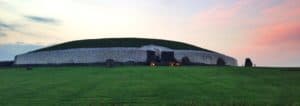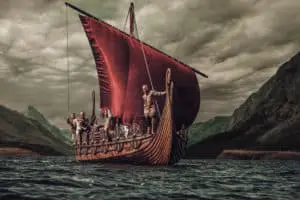The Moors in Spain: Exploring Their Enduring Impact on Science, Art, and Cultural Harmony
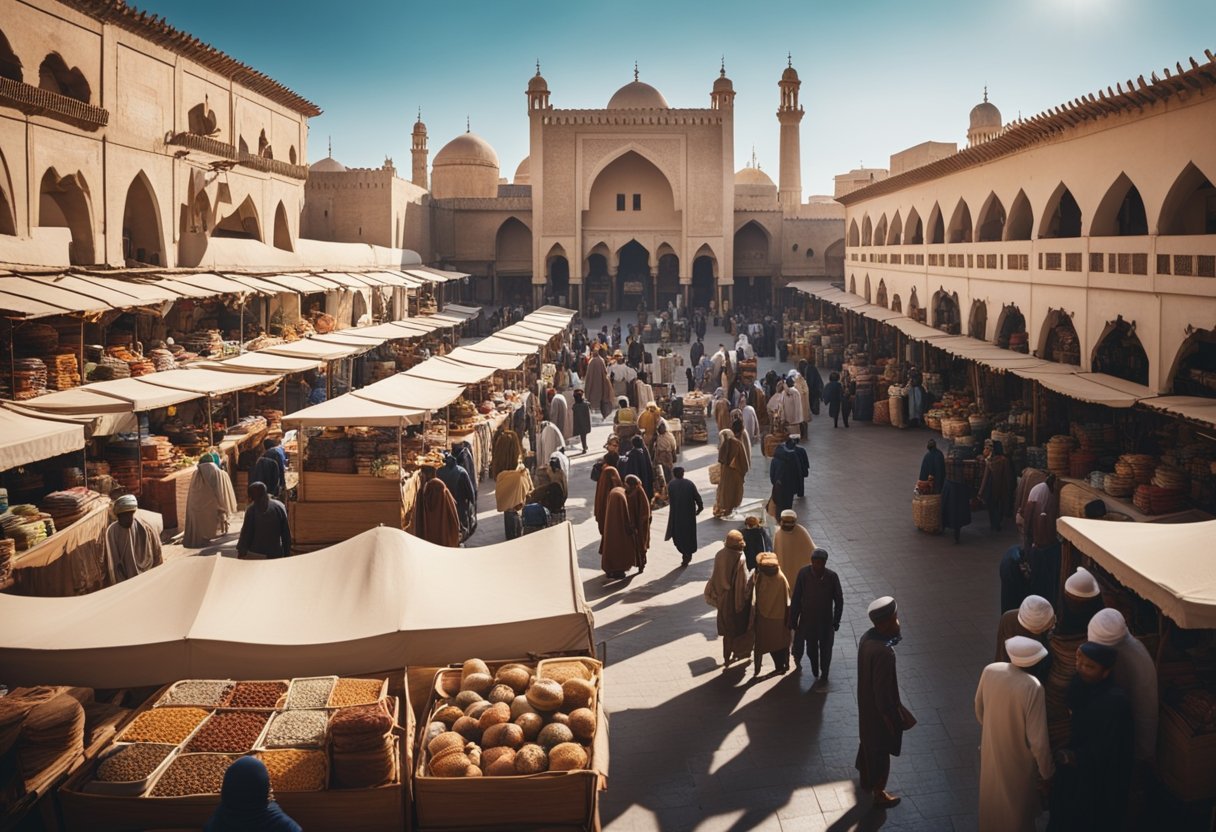
Updated On: April 24, 2024 by Marwa Alaa
As we reflect on the historical tapestry of Spain, the era of the Moors in Spain emerges as a remarkable period that has left indelible marks on Spanish culture, science, and art. From the early 8th century until the late 15th century, Muslim rule in Spain cultivated an environment where multiple cultures coexisted, interacted, and thrived. This period, often idolised for its perceived tolerance, was one where Christians, Jews, and Muslims lived side by side, leading to a fusion of ideas and customs that would resonate through history.
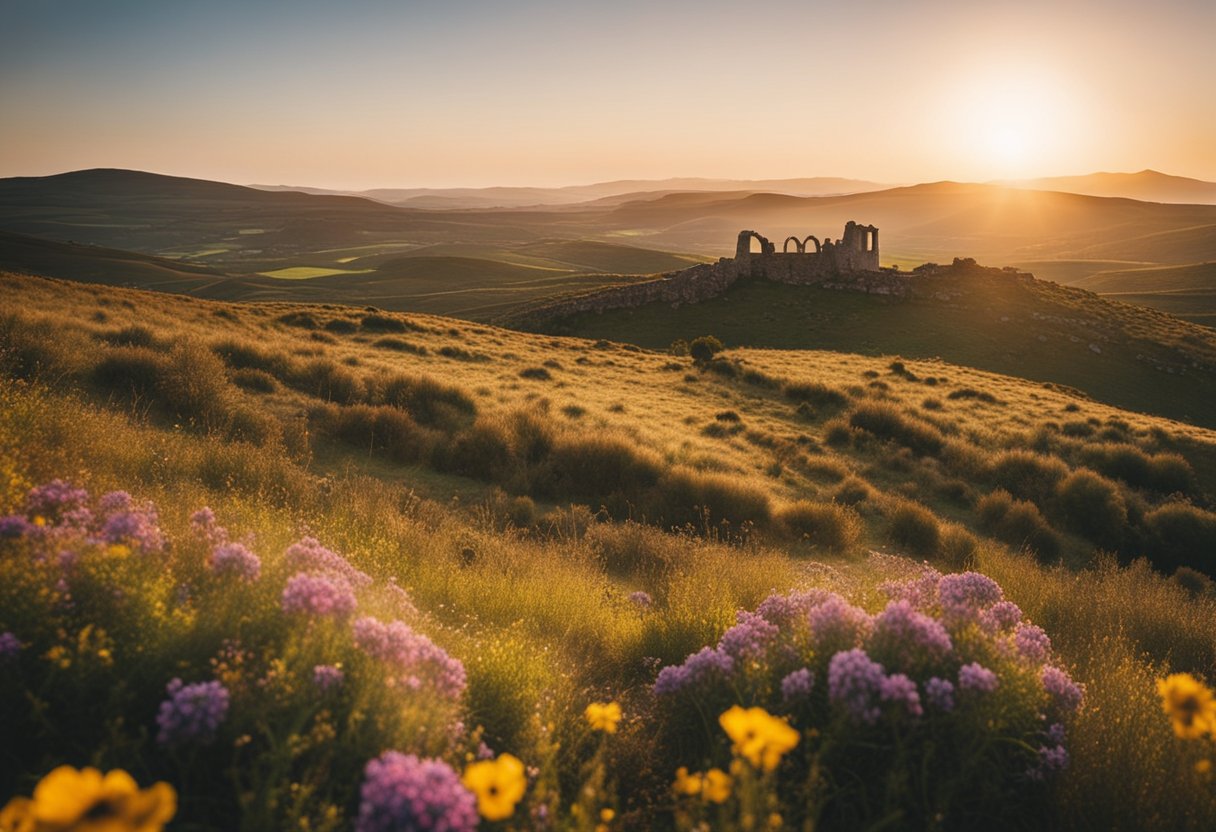
During their reign, the Moors introduced an array of advancements that propelled Spain into the forefront of medieval progress. They were visionaries in science, which is evident in their contributions to astronomy, medicine, and engineering. The Moorish influence extended into the realm of art, where their intricate designs and innovations in architecture can still be admired in modern-day Spain. This era’s legacy is a rich collage of intellectual achievements and aesthetic masterpieces that have shaped not just Spanish but global heritage.
The Dawn of the Moors in Spain
The inception of Moorish rule in Spain marked the beginning of a transformative era that would forever alter the cultural and scientific landscape of Europe.
Rise of Al-Andalus
In 711 AD, a pivotal moment unfolded on the Iberian Peninsula. Muslim forces, comprising Arabs and Berbers from North Africa, crossed the Strait of Gibraltar and initiated the invasion of Spain. This marked the establishment of Al-Andalus, a region that would become a centre of Islamic culture in Europe. These events set the stage for a period of profound advancements in science, art, and architecture, evidence of which still endures in Spain’s rich cultural tapestry today.
The Berbers, indigenous to North Africa, played an instrumental role in the success of the Muslim conquest. They joined ranks with the Arabs to form a formidable alliance that overpowered the Visigothic rulers of the time. This collaborative force reshaped the Iberian Peninsula, both politically and culturally, over the subsequent centuries.
The transition to Moorish rule introduced significant developments to Spain and, by extension, Europe. Muslims brought a wealth of knowledge from Africa, contributing to an era of unparalleled coexistence and intellectual exchange. They implemented advanced agricultural techniques, architectural innovations, and scholarly pursuits that would thrive in the fertile soil of Al-Andalus.
Societal Structure and Coexistence
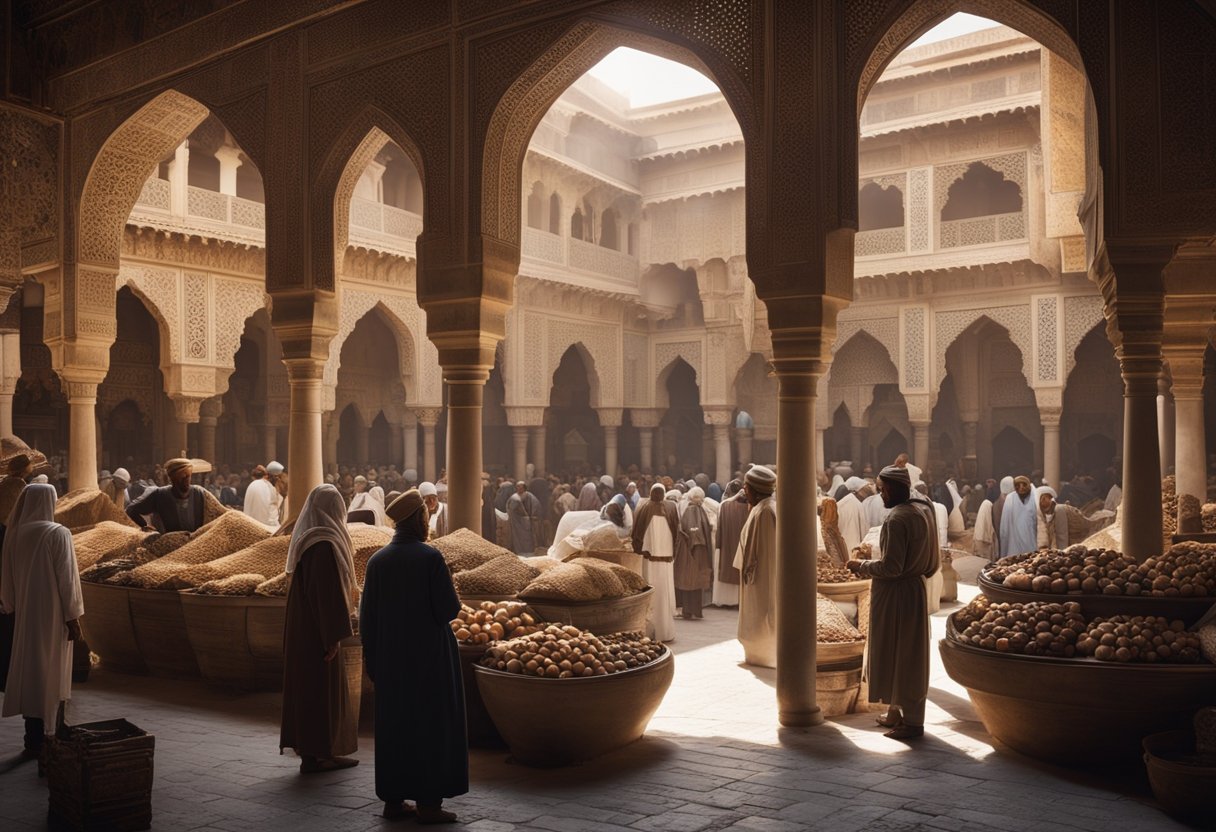
In medieval Spain, the Moors fostered an environment where multiple religions and cultures thrived in relative harmony.
Religious and Cultural Diversity
Under Moorish rule, Al-Andalus became a beacon of religious coexistence. Muslims, Christians, and Jews lived side by side, contributing to a vibrant societal tapestry. This era, often referred to as “La Convivencia” (The Coexistence), saw these groups sharing neighbourhoods and, at times, public facilities like public baths, yet maintaining their distinct religious and cultural practices.
Languages and Education
Language and education were key components of societal structure. Arabic served as the lingua franca and the primary language of education, which allowed for an exchange of knowledge between Arabs and non-Arabs. The intellects of the time often knew Latin and Hebrew, as well as Arabic, enabling the translation of Arabic and Greek texts into Latin, profoundly influencing European thought. Our education systems integrate various cultural viewpoints, providing a rounded and comprehensive learning experience.
Architectural Marvels
As we explore the legacy of the Moors in Spain, we marvel at the remarkable contribution they made to architecture. Their distinct style is particularly encapsulated in the grandeur of mosques and palaces, characterised by horseshoe arches and intricate geometric patterns.
Córdoba and the Mezquita
Córdoba was a centre of Moorish culture, and the Mezquita stands as a monumental symbol of this era. Initially built as a mosque, the Mezquita was later converted into a cathedral, yet it retains the stunning architectural features of its original design. Its famous horseshoe arches and ornate mihrab showcase the ingenious combination of form and function that is a hallmark of Islamic architecture.
Granada and the Alhambra
In Granada, the Alhambra is a testimony to Moorish craftsmanship and ingenuity. This palatial complex is not only a fortress but also a collection of palaces and gardens that exhibit the quintessential Islamic architectural elements, such as intricate tile work, flowing water features, and reflective pools. The Alhambra’s use of space and light creates an ambience that is both serene and regal, truly a pinnacle of architectural achievement.
Contributions to Science and Technology

In the realms of science and technology, the Moors left an indelible mark on Spain, advancing knowledge in areas that remain fundamental to modern society. We’ll explore how their innovative approaches to astronomy and mathematics, as well as medicine and healthcare, have deeply influenced contemporary practices.
Astronomy and Mathematics
The Moors were avid astronomers, utilising the clear skies of the Iberian Peninsula to enhance their celestial knowledge. They constructed observatories, and their detailed astronomical tables, or zijes, were incredibly accurate for their time. It was through their work in astronomy that they furthered the field of mathematics, particularly in the fields of algebra and trigonometry. Their translations and commentaries on classical works, including those of the Greek mathematician Ptolemy, were instrumental in disseminating nuanced mathematical concepts throughout Europe.
Medicine and Health Care
In medicine, the Moors brought about revolutionary change, establishing hospitals that were advanced for the medieval period, and integrating knowledge from Greek, Roman, and Arab sources. They were pioneers in pharmacology, introducing new medicinal substances and compiling encyclopaedias of knowledge that were later relied upon by European scholars. Hygiene was also significantly improved under Moorish influence, with the implementation of public baths and the introduction of sophisticated irrigation systems that not only supported agriculture but also the management of wastewater.
Economic Impact and Agricultural Legacy
In the tapestry of Spain’s historical narrative, the economic and agricultural advancements introduced by the Moors stand out as monumental. Their sophisticated commercial practices and agricultural techniques laid down an enduring framework for prosperity.
Trade and Commerce
Under Moorish governance, Spain experienced a flourishing of trade and commerce. We set up intricate trade networks that connected the Iberian Peninsula with the rest of the Islamic world and beyond. Notable commodities such as silk and cotton became pivotal in boosting the economy, transforming Spain into a nexus of international trade.
- Silk: Became a highly prized and widely exported product, bolstering economic growth.
- Cotton: Contributed significantly to the textile industry, enhancing domestic and foreign commerce.
Agriculture and Irrigation
Our advancements in agriculture were profound, with the introduction of crops like rice and saffron. These not only diversified the gastronomic landscape but also contributed to the agricultural economy of Spain.
- Rice: This staple crop found in al-Andalus suited the warm climate and became central to the agricultural economy (Arab Moorish Influence on Agriculture in Al-Andalus).
- Saffron: Renowned for its value and the labour-intensive harvesting process, it emerged as a lucrative sector within agriculture.
Our implementation of intricate irrigation networks was another significant innovation, enabling the cultivation of varied crops across seasons and improving yields. These systems were vital in sustaining the increased agricultural production and are still appreciated for their ingenuity today.
- Irrigation: Complex networks transported water efficiently, which is crucial for nurturing the arid lands of Spain (The Moors in Spain).
Through our trade expertise and introduction of revolutionary agricultural methods and crops, we created an economic strength that supported Spain’s prosperity for centuries. The legacy of our irrigation techniques continues to support modern agriculture.
The Influence on Language and Education
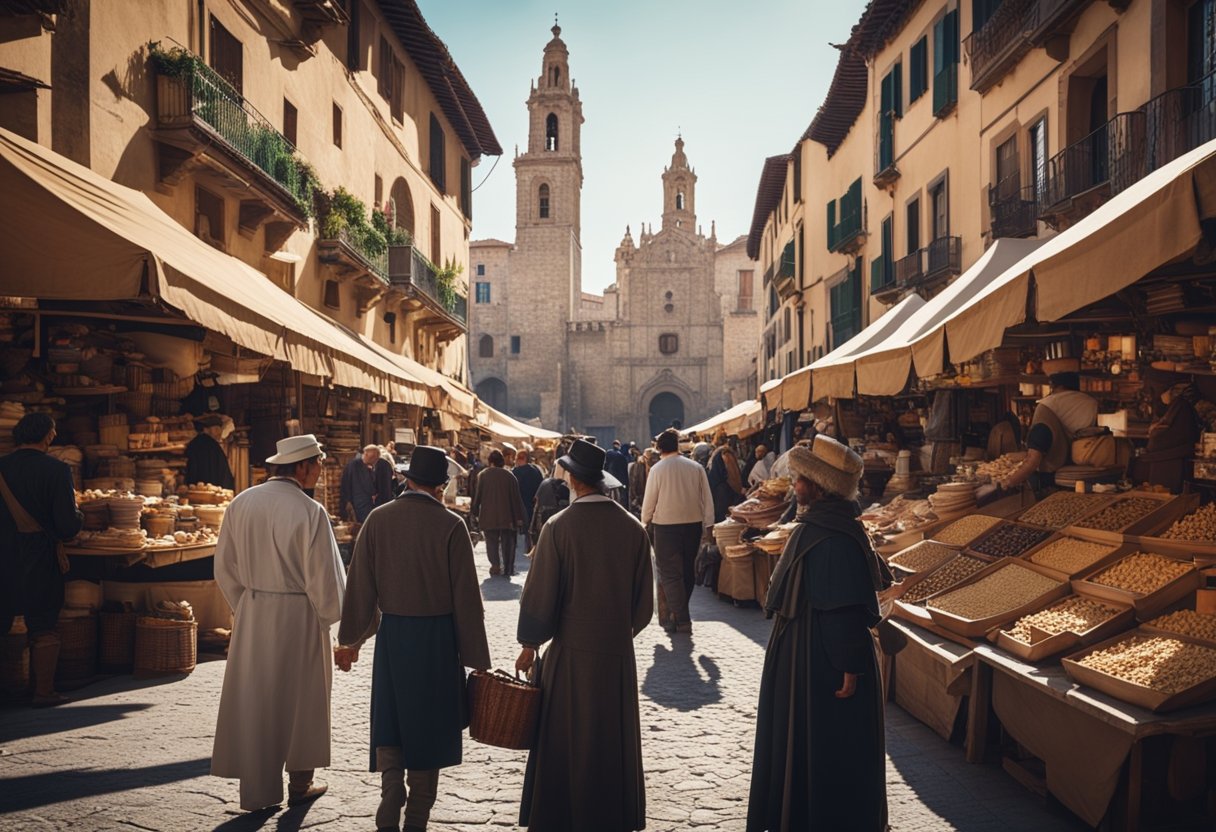
The Moors’ arrival in Spain left a profound impact on the Spanish language and the educational system. Their 800-year presence facilitated a significant transfer of knowledge, especially in the realms of science and the humanities.
Language
Our linguistic heritage owes much to the Moors. Today, many words in the Spanish language have Arabic origin, reflecting areas where their influence was particularly strong. For example, the Arabic term “al-qutun,” meaning “cotton,” became “algodón” in Spanish, illustrating the trade and agricultural knowledge they introduced. In historical linguistics, this Moorish influence enriched the Spanish vocabulary with approximately 4,000 Arabic-derived words, encompassing subjects from astronomy to architecture.
Education
The establishment of centres of learning during the Moorish period had lasting effects on educational frameworks within Spain. They introduced an educational system that valued science and philosophy, which encouraged the sharing of knowledge across cultures and religions. Some of the first universities in Europe found inspiration in the Moorish approach to academics and intellectual pursuit.
- Libraries and Universities: The Moors established libraries stocked with vast collections of manuscripts, which became the nuclei for later European universities. These institutions laid the foundations for modern education, emphasizing disciplines such as medicine, mathematics, and astronomy.
We can observe the legacy of the Moors in Spain by examining the remnants of their sophisticated education system, which was unparalleled for the time, and the rich linguistic tapestry that continues to colour modern Spanish. They created an atmosphere that valued knowledge, coexistence, and the perpetuation of learning, leaving a durable mark that transcends contemporary educational and linguistic domains.
Culinary Influences and Mediterranean Diet

The culinary legacy of the Moors significantly enriched what we now recognise as the Mediterranean diet, introducing a variety of ingredients and flavours that have become staples in Spanish cuisine.
Introduction of New Crops
With the arrival of the Moors, the Iberian Peninsula saw the introduction of numerous crops that would define its culinary identity. Perhaps the most impactful of these was the expansion of olive oil production, a vital component of Mediterranean cooking known for its health benefits and its capacity to bring out the flavours of other ingredients.
Alongside olive oil, they introduced a variety of citrus fruits, such as oranges, lemons, and apricots, which added a zest to Spanish dishes and became integral to the region’s exports. This zestiness complemented the natural sweetness of newly introduced fruits like figs and peaches, broadening the palate and providing new sources of nutrition.
In the realm of spices, the Moors were paramount in popularising saffron, a prized spice not only for its flavour but also for its vibrant colouring capabilities. The Moors’ influence didn’t end with spices; they brought with them rice, which became the cornerstone of many Iberian dishes, including the world-renowned paella.
List of notable Moorish additions to Spanish agriculture:
- Olive Oil: Revolutionised cooking and food preservation.
- Rice: Basis for a variety of staple Spanish dishes.
- Saffron and Spices: Introduced new flavours and food colouring techniques.
- Citrus Fruits: Including oranges, lemons, and apricots.
- Figs and Peaches: Introduced new textures and sweetness to desserts and other dishes.
These ingredients, each contributing their distinct qualities, went on to shape not just Spain’s culinary heritage but also the broader Mediterranean diet prized today for its balance and health benefits.
Artistic Expressions and the Moorish Legacy
The Moorish presence in Spain has left an indelible mark on the nation’s cultural tapestry, notably in artistic expression. Here, we uncover the profound influences and contributions of the Moors in the realms of music, performance, and decorative arts.
Music and Performance
Moorish Spain fostered a rich tradition in the fields of music and performance, which acted as a confluence of various cultural streams. The legacy resonates in the strumming of the Spanish guitar and in flamenco, a genre that, though developed after the Moorish period, carries echoes of past interactions. Melodic structures and rhythmic patterns bear hallmarks of an East meets West blend, where Arab and Iberian influences intertwine harmoniously.
Decorative Arts and Crafts
Our understanding of the Moorish legacy in decorative arts is most vividly captured within the realm of tilework and textiles, with geometric patterns and intricate arabesques standing as testaments to high artistic endeavours. This aesthetic, often characterized by repetition and complex mathematical precision, finds its epitome in the Alhambra of Granada. The use of azulejos, ornamental tiles, gained prominence, leaving a kaleidoscope of colour and form across Spain’s architectural landscape. Moreover, we see the influence of Moorish artisanship in diverse crafts, including metalwork and wood carving, each revealing a profound respect for material and detail.
The Twilight of Moorish Sovereignty
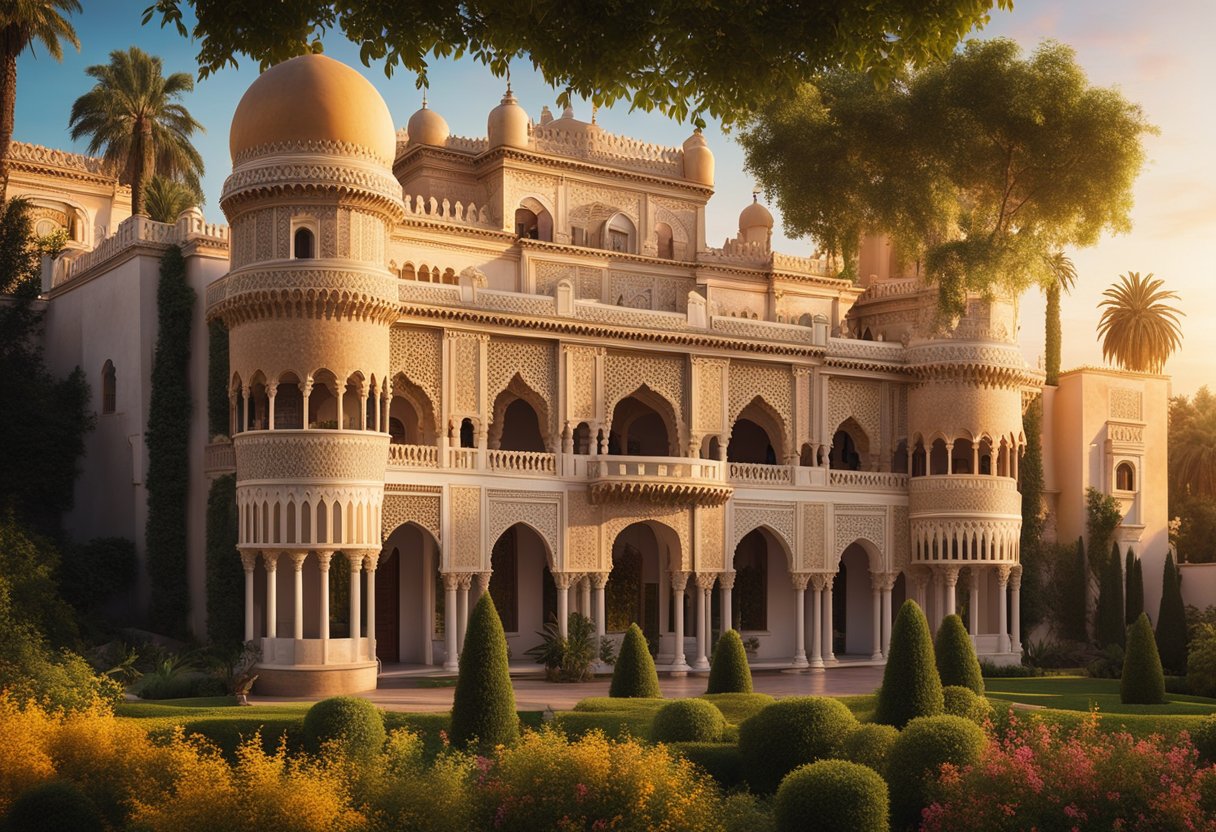
As we turn the pages of history to the concluding chapter of Moorish rule in Spain, we witness the fusion and friction of cultures that shaped the Iberian Peninsula. Our focus narrows on the pivotal events leading to the end of an era where Muslim and Christian dynasties contested the land.
The Reconquest and Fall of Granada
The Reconquest, or ‘Reconquista’ in Spanish, delineates the period of history where Christian kingdoms aimed to reclaim territories from Muslim rule. This centuries-long endeavour culminated in the Kingdom of Granada’s fall, the last stronghold of the Moors in Spain. By the 11th century, figures such as El Cid became emblematic of the Christian military campaigns against the Moors. However, the Muslim presence remained resilient, bolstered by the arrival of the Almoravid dynasty and later the Almohads, which stemmed the Christian tide for a time.
Nevertheless, the tide turned in favour of the Christians, particularly after the disintegration of the Almoravid power and the rise of smaller Taifa kingdoms. The Kingdom of Granada, a legacy of the Nasrid dynasty, stood as a testament to the enduring Moorish influence, with its exquisite palaces like the Alhambra symbolising the zenith of Moorish art and architecture.
In 1492, after a long siege and diplomatic negotiations, King Ferdinand II of Aragon and Queen Isabella I of Castile witnessed the surrender of Granada. This momentous event not only marked the end of 781 years of Muslim rule in Spain but also the completion of the Reconquest. It was a turning point in history, profoundly reshaping the religious and cultural landscape of Spain and paving the way for the Spanish Inquisition and the rise of Spain as a unified Christian kingdom under the Catholic Monarchs.
Modern Day Reflections
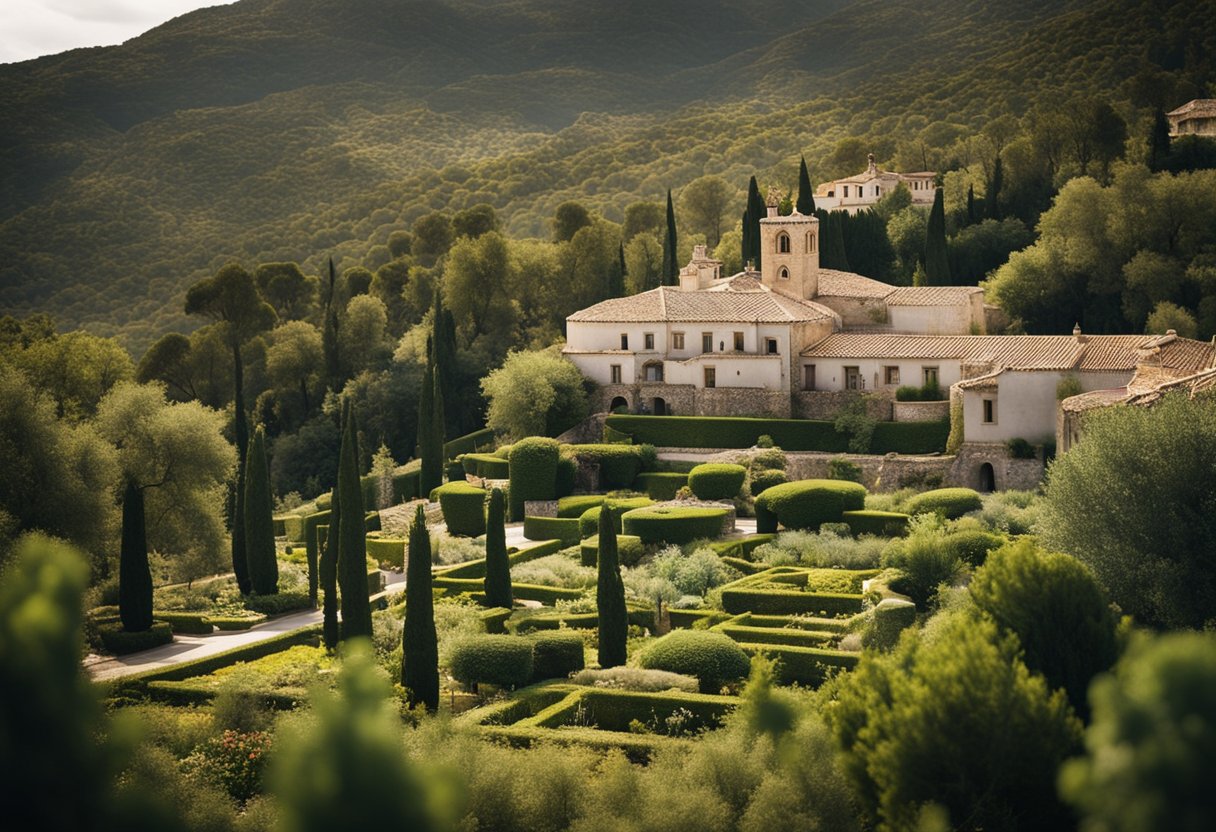
In contemporary Spain, the impact of the Moors is still a vibrant tapestry that threads through the fabric of Spanish society.
The Legacy in Contemporary Spain
Culture: The Moorish influence remains a significant part of Spain’s cultural heritage, especially in regions like Andalusia, where their architectural prowess is displayed in landmarks such as the Alhambra in Granada, the Giralda in Seville, and the Great Mosque of Córdoba. These structures draw visitors from across the globe, echoing the grandeur of a bygone era.
Dance and Music: Flamenco, with its emotive intensity, can trace roots to Moorish and Romani influences, and it remains a profound expression of Andalusian identity. Furthermore, the classical guitar, integral to Spanish music, owes its development to the lute introduced by the Moors.
European Renaissance: The Moorish period in the Iberian Peninsula provided a conduit for the transmission of knowledge from the Arab world to Europe. The city of Toledo became a crucible of translation, where Arabic texts on science, mathematics, and philosophy were translated into Latin, greatly contributing to the Renaissance.
Spain and Portugal: The discoveries made during the Age of Exploration by navigators from these nations were built upon navigational instruments and maritime knowledge developed during the Islamic Golden Age, which the Moors were part of. The astrolabe and improved compass designs are among the contributions that facilitated the voyages of figures like Vasco da Gama and Christopher Columbus.
Cities like Zaragoza, Málaga, and Valencia proudly bear remnants of Moorish walls, baths, and gardens. Even in the use of water in cities, Moorish irrigation systems, which transformed arid lands into fertile gardens, still support agriculture.
Language: The Arabic influence extends to the Spanish language, with many words starting with “al-” such as “alcohol” and “alcázar,” or “alcohol” and “castle,” which have been integrated into everyday vernacular.
In our reflection upon the Moorish legacy, it is clear that centuries of coexistence have woven a rich mosaic into Spanish life: architecture, language, and intellectual heritage remain markers of a profound historical connection between the Moors and Spain. Our journey reveals a past deeply entwined with the present, illuminating a mutual respect and curiosity that underscores the shared history of these cultures.
Preservation and Tourism
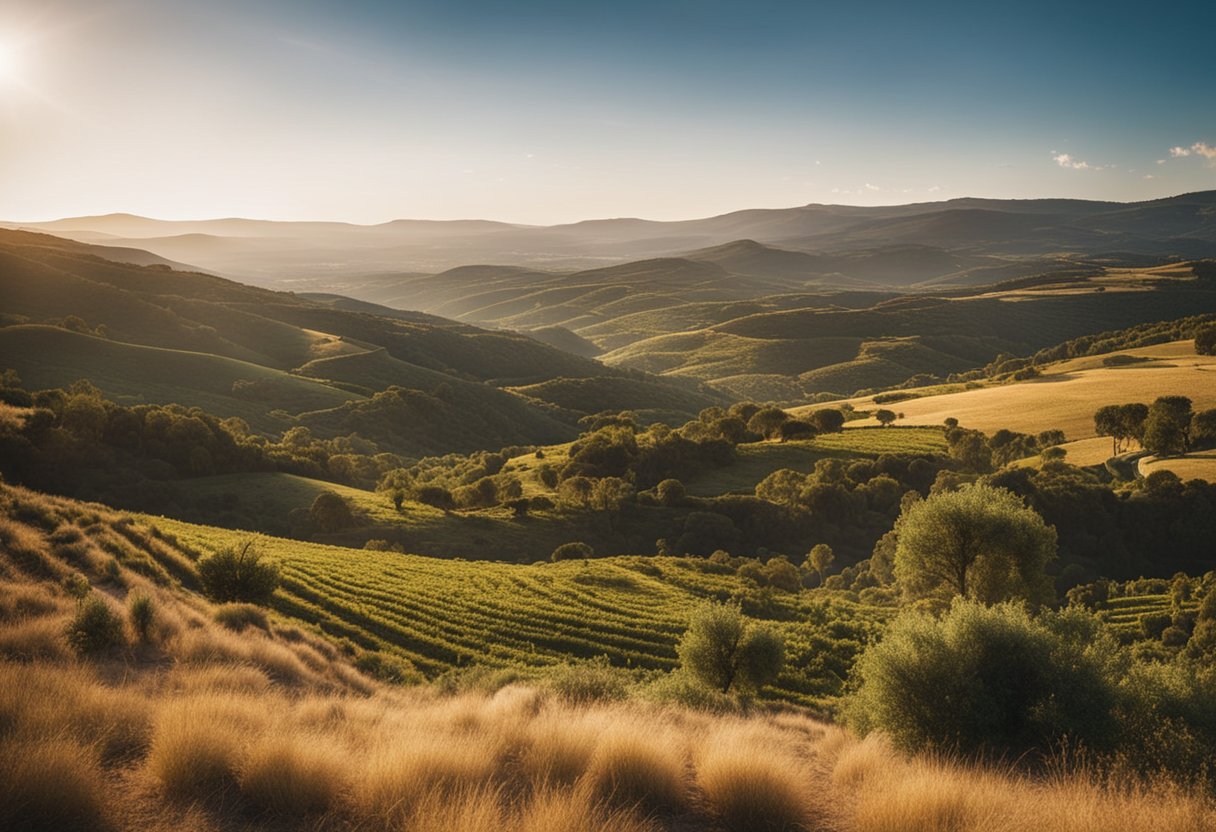
Preserving Spain’s Moorish landmarks is crucial for both the safeguarding of cultural heritage and the promotion of tourism. Granada’s Alhambra Palace serves as a prime example of meticulous conservation efforts that allow us to step back in time and witness the grandeur of Moorish architecture. The elaborate tilework and artistry beckon tourists from all corners of the globe.
Seville’s Alcázar, with its intricate designs and verdant gardens, demonstrates another aspect of the Moors’ lasting legacy. To protect these treasures, both sites implement visitor quotas and conservation protocols. More than just attractions, they are living classrooms offering invaluable lessons in history and architecture.
Tourism to sites like the Alhambra and the Alcázar greatly benefits the local economy, but it is our collective responsibility to ensure that this influx of visitors does not compromise their integrity. Regulations governing visitor numbers and strict preservation codes are vital in this endeavour.
La Mezquita in Cordoba stands as another focal point of preservation, blending Islamic architecture with later Christian influences. Its conversion into a cathedral has made it a unique symbol of coexistence throughout the centuries.
We recognise the importance of these monuments as pillars of our cultural heritage. Their careful maintenance not only honours history but also ensures the continued allure for tourists. Our role as custodians of these sites is intertwined with the economic vitality that tourism brings to cities like Granada and beyond.
In conclusion, we look upon the stewardship of these historic sites as both a privilege and a duty, ensuring that they will captivate and educate for generations to come.
Frequently Asked Questions

Within our exploration of the Moors’ legacy in Spain, we encounter numerous intriguing aspects that continue to resonate through time. Here, we address some common queries relating to the extensive Moorish influence on Spain’s culture and heritage.
What architectural impact did the Moors have on Spanish design?
The Moors introduced a variety of architectural styles to Spain, which included horseshoe arches, intricately carved woodwork, and the use of ornamental tiles, or azulejos. Their legacy is especially prominent in famous landmarks such as the Alhambra in Granada.
How did the Moorish presence shape culinary traditions in Spain?
Moorish rule had a substantial influence on Spanish cuisine, introducing ingredients like rice, saffron, and various spices. These elements are foundational to many traditional dishes, including paella, which is a hallmark of Spanish gastronomy.
In what ways did Moorish rule contribute to the field of science within Spain?
Under the Moors, Spain became a centre of scientific advancement, inclusive of developments in astronomy, chemistry, and medicine. The translation of ancient texts and the Moors’ own works enriched European science after the Reconquista.
What contributions to art from the Moorish period are still evident in Spain today?
Moorish art is visible through decorative calligraphy, elaborate geometric patterns, and textiles. The lasting impact of these artistic elements can be seen in Spanish crafts, as well as in preserved historical sites across Spain.
What are some lasting effects of Moorish coexistence in Spanish society?
The period of Moorish coexistence led to a fusion of cultures in Spain, seen today in the mix of Christian, Muslim, and Jewish influences on the Spanish language, music, and festivals, enriching the cultural tapestry of the nation.
Can you trace the origins of any modern Spanish technological advancements to Moorish innovations?
While directly tracing modern technology to the Moors can be complex, their contributions in areas such as irrigation systems and architectural techniques laid a foundation for later technological progress within Spain.


